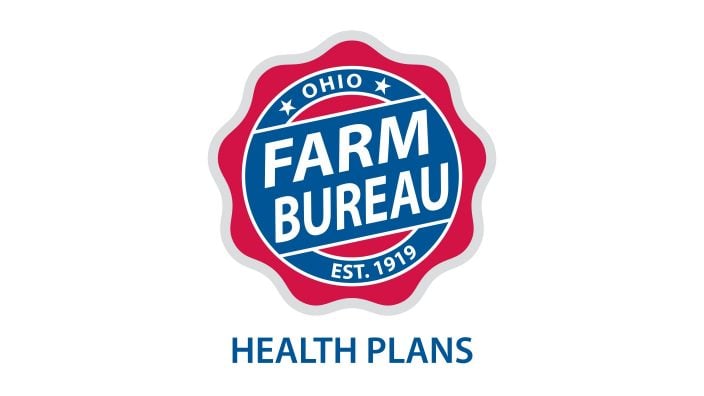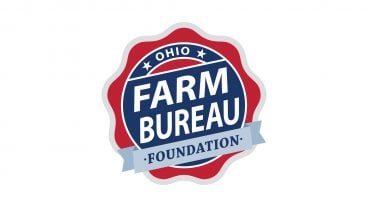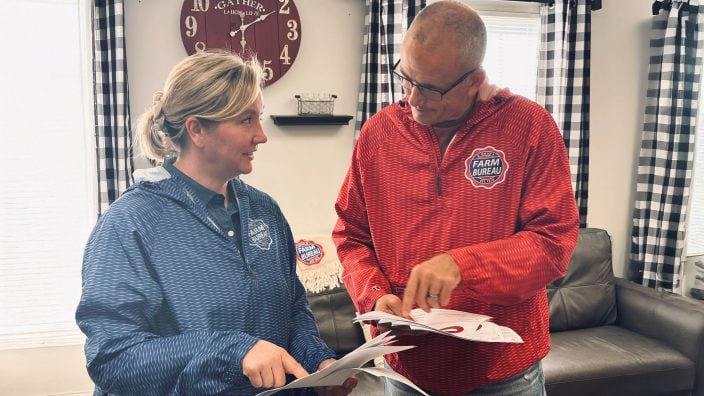Applications for Ohio Farm Bureau Health Plans now available
Members have three ways to apply: contacting a certified agent, calling 833-468-4280 or visiting ohiofarmbureauhealthplans.org.
Read MoreUnderstanding the Current Agricultural Use Value program and proper forestry management could lead to increased profits and sustainable land use.
Ohio is home to a growing forestry industry, and for farmers in northwest Ohio, understanding the Current Agricultural Use Value program and proper forestry management could lead to increased profits and sustainable land use.
Tyler Morlock, an advocate for proper forestry management and a Wyandot County Farm Bureau group member, is leading the charge to educate farmland owners about CAUV and the benefits of responsible land stewardship.
The CAUV program is designed to tax farmland based on its agricultural value rather than its potential as a development property. Forestry is considered agriculture and therefore makes that land CAUV eligible.
Morlock has a deep-rooted background in farming. After completing his bachelor’s degree at Ohio State University, he briefly worked at the state tree nursery in Indiana but soon felt the pull to return home and pursue a career in Ohio’s forestry sector.
“I wanted to work in northwest Ohio because it’s such an underserved area,” said Morlock. “I know a lot of people who have been taken advantage of or they didn’t know they could be part of the CAUV programs. I focus on helping farmers get the most out of that back 40 that they don’t really have time to pay attention to.”
Morlock, who runs his own consulting forestry business, Morlock Forestry and Habitat Management, is dedicated to helping farmland owners unlock the full potential of their land.

In addition, Morlock and John Kehn have spearheaded an eight-county program focused on helping farmers and county auditors learn about CAUV values and proper forestry management in northwest Ohio. These programs are specifically designed to bridge the knowledge gap and empower individuals to make informed decisions about their land.
With the help of state forestry representatives, Morlock and Farm Bureau hosted a four-county event with over 40 attendees this fall and another information session in northwest Ohio is slated for March 2024.
“I just like to give people the opportunity to see what I’m talking about because it’s hard to conceptualize everything without seeing the dollars and cents right in front of you,” he said.
The eight-county program aims to align the objectives of the CAUV auditors and create a shared understanding of the role of foresters in benefiting farmers and the environment.
“The primary question I get is, ‘what are my trees worth?’” he said. “A good forester will tell you that it depends—and it depends on a lot of things.”
Some of those factors include tree age, condition, location, species, and market demand, which all play pivotal roles in determining a tree’s value, and this value can fluctuate significantly.
In addition to educational programs, Morlock participates in presentations and workshops for the Woodland Owners and Local Loggers Chapter, recognizing the lack of forestry resources in the region. His goal: ensuring landowners are well-informed about programs like CAUV and cost-sharing initiatives.
Morlock is also investing in educating the next generation, collaborating with organizations such as FFA to raise awareness about careers in forestry, and connect the relationship between agriculture and forestry.
Forestry, along with farming and fishing, is listed among the projected fastest-growing industries in Ohio, with a growth rate of 3.2% anticipated between 2020 and 2030, according to the Ohio Bureau of Labor Market Information. Jenna Reese, the executive director of the Ohio Forestry Association, attributes some of this growth to the construction boom during the COVID era, which spurred demand for hardwood products.
“The construction boom of the COVID-era dramatically increased demand for hardwood products to furnish new homes,” Reese said. “While that bubble has largely burst, we continue to see a strong demand for Ohio’s forest products, specifically staves for bourbon barrels, hardwood furniture, flooring and millwork.”
Ohio’s forest products industry has an impressive annual revenue of over $30 billion, making it a substantial contributor to the state’s economy.
“The forest products industry is completely supplied by the voluntary forest management decisions of Ohio’s families and public forests,” Reese said. “Forest management and sustainable harvests go hand-in-hand. You can’t have one without the other, presenting a benefit and challenge to growth.”
Landowners in Ohio play an important role in shaping the future of the forest products industry. Their responsible forest management decisions today will have far-reaching impacts on forest health, carbon capture, and timber harvests for generations to come.
Several programs, including EQIP and CRP, offer financial support for forest management practices, ensuring that landowners have the necessary resources to make responsible decisions for their properties.
Consulting foresters, like Morlock, are great resources for those seeking additional information. Reese also recommends exploring resources such as The Ohio Master Logger Program through OFA, The Ohio Tree Farm Program through the American Tree Farm System, SEOHIOWOODS, Ohio Woodland Stewards Program, and Service Forestry within the ODNR Division of Forestry.
“The decisions landowners make today will radically improve the future landscape, bless future generations, and dictate Ohio’s forest products in 100 years,” Reese said . “It is the most impactful legacy plan you can have.”
There are different types of foresters, each with unique roles:
Photos by Dave Liggett


Members have three ways to apply: contacting a certified agent, calling 833-468-4280 or visiting ohiofarmbureauhealthplans.org.
Read More

The scholarship provides one renewable award of $10,000, supporting a student pursuing a degree in agriculture or an agriculture-related field.
Read More

A short conversation over the phone, a quick text message or even finding a small daily habit such as journaling can make a big difference.
Read More

One of the best decisions Shannon and Heather Utter made a few years ago was looking into a Farm Bureau member benefit that has ended up saving them thousands of dollars on their energy bills.
Read More

Ryan Hiser has experienced first-hand the importance of having the opportunity to vote on issues that will affect his family operation and other farmers.
Read More

Bill Patterson, Cy Prettyman and Adele Flynn will continue to serve as officers for Ohio Farm Bureau Federation.
Read More

Delegates discussed many topics impacting agriculture including farmland preservation, local foods, and succession planning.
Read More

Twenty-six farmers govern the state’s largest farm and food organization.
Read More

The 2025 recipients are Fred Cooke (posthumous) of Richland County, Marvin Dietsch of Williams County, Steven Knollman of Hamilton County and Michele Miller (posthumous) of Ottawa County.
Read More

Nathan and Jill Parriman grow seasonal crops, including Christmas trees, pumpkins and cut flowers, providing U-cut experiences that invite customers to engage directly with agriculture.
Read More